The Best Foods to Eat Pre and Post-Workout
Looking for the right foods to maintain a healthy and balanced diet for pre and post workout nutrition? Look no further than this list of 11 must-include foods!


I’m a 180 lb. guy looking to skinny up and build muscle. Lifting a bunch lately. Running a bit. How much protein should I eat in grams per day?
– Kenneth B.

Depending on your age and height, your estimated daily protein needs for your goals look to fall in the 90-115 gram range. That’s about 1.1-1.4 gm/kg. As you progress with regular intense training, upwards of 1.6 gm/kg (131 gms) may be needed. Whether you lose fat or gain muscle also has to do with your total calories. If you’re undereating severely, you’ll need more protein. If your calories are beyond adequate, less protein is used for muscle development.
In addition to the amount of protein, you should focus on the quality of your protein and nutrient timing. Fatty sources of protein like sausage, cheese and regular ground beef contribute too many calories. Poultry breast, fish, loin and round cuts of beef/pork, beans and eggs are lean or medium-fat protein sources more likely to help you get thinner. Gulping down a 16 oz steak at once will not load muscles adequately. Instead, consume about 30 grams of protein per sitting, including breakfast. For supplements, a whey, casein, soy protein blend is ideal for longer-lasting protein delivery to working muscles.
– Debbie J., MS, RD
This article should not replace any exercise program or restrictions, any dietary supplements or restrictions, or any other medical recommendations from your primary care physician. Before starting any exercise program or diet, make sure it is approved by your doctor.
Some questions have been edited for length and/or clarity.
 Have a nutrition question? Our registered dietitian is ready to help!
Have a nutrition question? Our registered dietitian is ready to help!
Email nutrition@lafitness.com or submit your question below and it may be featured in an upcoming article!
Looking for the right foods to maintain a healthy and balanced diet for pre and post workout nutrition? Look no further than this list of 11 must-include foods!
Curious about whether or not pre-workout snacking is for you? Our registered dietitian helps give some suggestions to help sate your appetite and help maintain constant fuel supply.
Can the foods your eating be contributing to stubborn back fat? Our registered dietitian talks about the basics needed for fat melting.

Much like Goldilocks trying to find the perfect temperature of porridge, many of us struggle with finding just the right temperature of water to use. Those temperatures often vary from activity to activity. While some people enjoy hot showers, others prefer cold ones. Some wash their fruits and veggies in lukewarm water, while others use cold water. It bids the question – are there certain water temperatures we should be using for certain tasks? We did the research.
Never second-guess water temperatures again. Check out the following activities and corresponding recommended water temperatures.
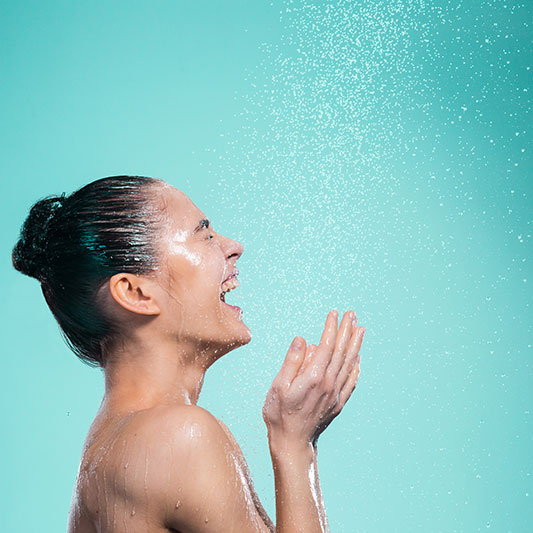
Showering + Washing Your Hair
Who doesn’t love a nice hot shower, with the steamy warmth of water cascading over you and warming you up from head-to-toe? The trouble is that hot showers (anything above 99 degrees1) can dry out your skin and leave your hair feeling brittle! The hot water can also strip your skin of natural oils and may trigger inflammation2. The solution to this isn’t necessarily to opt for a cold shower either. In fact, anything below the average temperature of 96 degrees can harness negative effects of its own. This means that you’re left with a healthy, happy, medium – warm, with a cold rinse at the end of your shower3, which is what you should aim for.

Drinking Water
Over the years, there has been quite a debate over whether it’s best to drink room temperature water or cold water. Well, the fact of the matter is, each side has its benefits. Here’s why:
Benefits of Drinking Warm Water
Benefits of Drinking Cold Water

Washing the Dishes
The hotter, the better! The water temperature should be uncomfortable for bare hands (invest in some rubber gloves to protect your hands when washing). Ideally, the water temperature should be at 110 degrees Fahrenheit11 to help kill bacteria and assist in cutting through tough built up grease.
Dishwasher Temperature
According to GE Appliances, “Water entering the dishwasher must be at least 120 degrees Fahrenheit and not more than 150 degrees Fahrenheit for the best cleaning and to prevent damage to the dishes.”12

Bathing Your Baby + Washing Your Dog
When you have something as precious as a newborn baby, you want to do everything in your power to take care of it. So, when it comes to bath time, what temperature is just right? According to an article put out by the Mayo Clinic, they suggest aiming for bath water around 100 F (38 C) and ensuring the room is comfortably warm too.13
Does this mean man’s best friend should be bathed in the same temperature water too? Pets are sensitive to hot and cold water, so to avoid the shock value, keep the water temperature at a lukewarm level.14 This will help ensure a comfortable experience for them and may even increase the effectiveness of the shampoo.15

Brushing Your Teeth
Cold water seems like the preferred way to go, but if you have sensitive teeth, lukewarm water may help with that. This one is really up to personal preference, so go for what feels most comfortable to you! However, Richard H. Price, a spokesman for the American Dental Association, did warn about water being too warm, potentially softening toothbrush bristles.16

Watering Plants
Have you ever thought the reason your outdoor and indoor houseplants kept dying was simply that you were born without a green thumb? Think again. Premature plant death is often caused by over-watering, but when you do need to water your plants, what temperature should the water be? Try allowing the water to reach room temperature before watering your greens.17
!! TIP: “Allowing tap water to warm up to room temperature also allows water additives to evaporate or settle out in the water. These additives can cause the browning of plant leaf tips. The prolonged use of water from a softener usually results in poor plant growth.”18
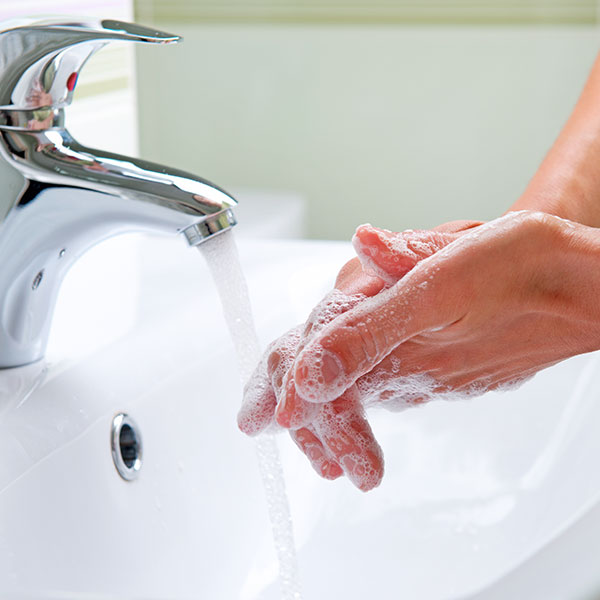
Washing Your Hands
Administration guidelines for food and restaurant establishments recommend that plumbing systems should deliver water at 100 degrees Fahrenheit. However, in a recent article published in Time Magazine, researchers at Rutgers University “found no significant difference in cleaning power between water that was 60, 79 or 100 degrees Fahrenheit.”19 The real takeaway here is to make sure to always wash your hands!

Washing Clothes
Hot water is best left for whites and heavily dirtied clothes, but a word for the wise: hot water may shrink, fade and even damage some fabrics.20 Make sure that you’re reading fabric labels to ensure you won’t be ruining the clothing.
Warm water is best when washing knits, jeans, and other man-made fibers.21 Most clothes can be washed in warm water (roughly 90 degrees Fahrenheit) without significant shrinking or fading occurring.
As for cold water washing, leave that for dark, bright colors, and delicates.22 However, when washing with cold water you may need to pre-treat or pre-soak clothes if they are heavily soiled.
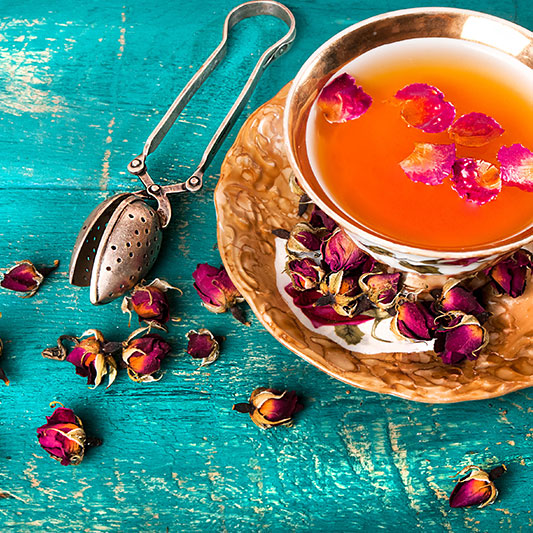
Brewing Teas
White Tea
White tea should be brewed at a low temperature, so as not to burn the tea leaves. A helpful tip would be to use water once tiny bubbles have formed on the bottom of the pan.23
Green Teas
Much like white tea, it’s best to brew green teas at a lower temperature as well. This can help prevent a bitter or grassy flavor from overpowering your tea.24 A tip offered by The Spruce online suggests waiting until tiny bubbles have formed on the bottom of the pot and begin rising to the surface of the pot.
Oolong Tea
Time to turn up the heat. For oolong tea, a higher temperature will not damage the tea. It’s suggested that brewing between 190 to 200 degrees Fahrenheit is the sweet spot.25 Bubbles should be slightly larger in size as opposed to brewing white or green tea, with a good amount of steam escaping the pot.
Black Tea
Depending on the type of black tea you are drinking, either moderate and high temperate water may be used. For more delicate black teas, brew as you would an oolong. For heavier black teas, it is fine to bring the temperature up to just under a boil.26 You will notice large bubbles and plenty of steam.
Pu-erh Tea
Boil, baby, boil! It’s suggested that pu-erh tea should be brewed with fully boiling water.
Herbal
Depending on the plants being used, the water temperature for brewing herbal tea varies widely.27 Check what’s best for your specific herbal tea in order to yield best results.

Brewing Coffee + Espresso
Straight from the National Coffee Association themselves, your brewer should maintain a water temperature between 195 to 205 degrees Fahrenheit for optimal extraction.” Cold water can result in under-extracted coffee, which may cause the coffee to taste flat. On the other hand, brewing too hot can impact the quality taste of the coffee.28
As for brewing that special shot of espresso, there are multiple claims that various temperatures are “best” for securing that perfect espresso shot. There doesn’t seem to be enough evidence to prove one temperature outshines another, so go rogue, espresso lovers of the world.
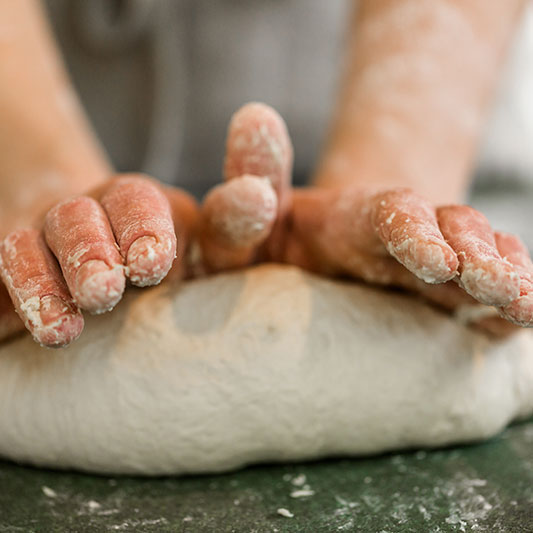
Cooking
Baking Bread
Time to bake the bread before you start breaking it. When activating the yeast for the bread, make sure that it is done so in 120 to 130 degree Fahrenheit water. Anything over 130 degrees can kill the yeast, and anything lower than 120 degrees can make the dough hard to work with.28
Thawing Meats
According to the United States Department of Agriculture, cold water thawing is a completely acceptable way to thaw meat as long as you follow a few safety guidelines. Completely submerge the bag of meat in cold tap water, changing out the water every 30 minutes to keep it cold and allowing the meat to continually thaw.29
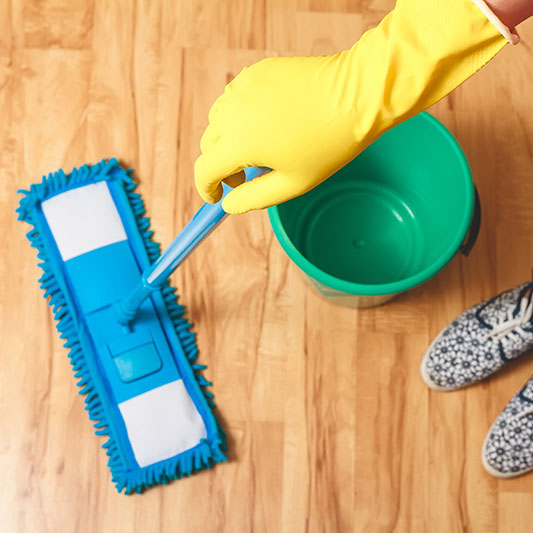
Mopping Floors
Cold water is said to work best for mopping floors, because cold water dries slower and evenly on the floor’s surface, which may help prevent smears and streaks from forming.30

Washing Produce
When washing fruits and veggies, the water should be no more than 10 degrees colder than the produce.31 As long as you make sure you’re scrubbing and sufficiently cleaning the produce in hand, tap water should be an efficient way to get produce clean and ready to prep/consume.
Sources:
We're "Trimming the Fat and Keeping the Muscle" on today's episode of the Living Healthy Podcast! On this episode of the Living Healthy Podcast, just in time for Thanksgiving, we learn about trimming or "cutting" the fat after you finish the bulking phase. This is...
It's easier to work hard when you’ve got a game plan. Here are some options to help keep you moving until the last second of your workout!
On today’s episode, you’ll hear from one of our own Master Trainers about what you should be eating and how you should be exercising during your bulking phase.

“Resolution” doesn’t mean change. It means a firm decision to do or not to do something. Hearing it makes me think of related words like: Resolute. Resolve. Stand your ground. Stanchion. Rock. Unwavering. Solid. Committed. Willpower. Sense of purpose. Driven.
Imagine yourself standing in front of a challenge with your fists on your hips. In charge, in command. Ready to take on the world! No temptations getting in your way. Feeling like you’re invincible.
Resolving to do something is action-based. You are the subject, the cause of action, the spark, the fire; not the receiver waiting for something to happen to you. Having this mindset means greater success in acting on your intentions instead of staying static.

First, start off right. Before you make a concrete goal, get to the heart of your true objective, tease out the “why,” your motivation behind it. Reflect on the past year and decide what you can make happen differently.
Limit your resolutions so you aren’t spread too thin. Having several goals is great, but not when they compete for priority. A short list is easier to tackle, and when one goal is accomplished you can move forward to the next.

Make choices that are consistent with your identity. “Whether you realize it or not, you make decisions based on staying true to your self-stories… You want to make decisions that match your idea of who you are,” explains Susan Weinschenk, PhD, a psychologist and author.
Set weekly or monthly reminders. Doing this is as easy as signing up for a recurring email prompt, or making a note on your wall or smartphone calendar.
Have visual cues. You may opt for obvious sticky notes or subtle well-placed postcard-sized images of things that relate to your resolution.
Share your resolutions. Verbalizing (or social media broadcasting) your resolutions to others increases your accountability. You are more likely to stay on course when others know your goals and might ask about your progress.
Ask for support when needed. Seeking and accepting help from those close to you may enable you to overcome challenges and deal with stress.
Display or showcase your successes. By highlighting the positives, you focus on what you can accomplish, which is motivating!
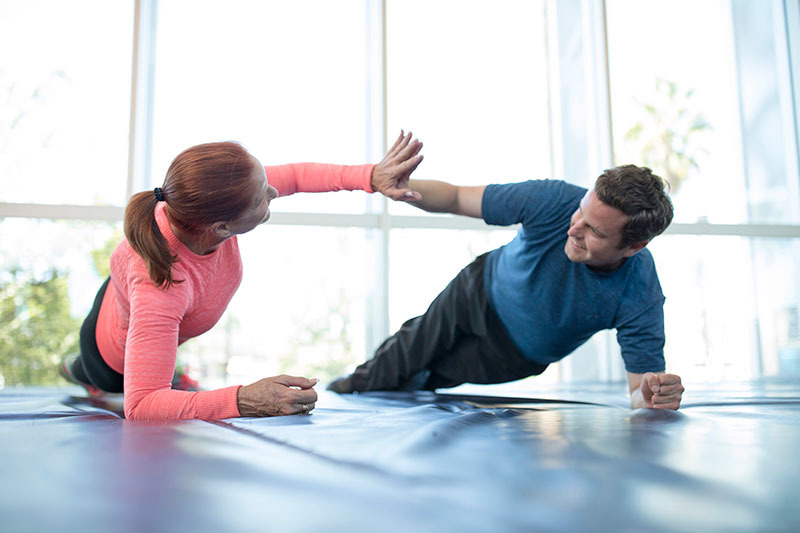
If you fall off course or realize it’s March before you’ve taken a step toward your goals, don’t worry. Treat setbacks like hiccups – expect them to occur, accept them, and then move on. Being resilient by bouncing back from difficulty allows you to get back on course. It’s never too late to change habits for the better.
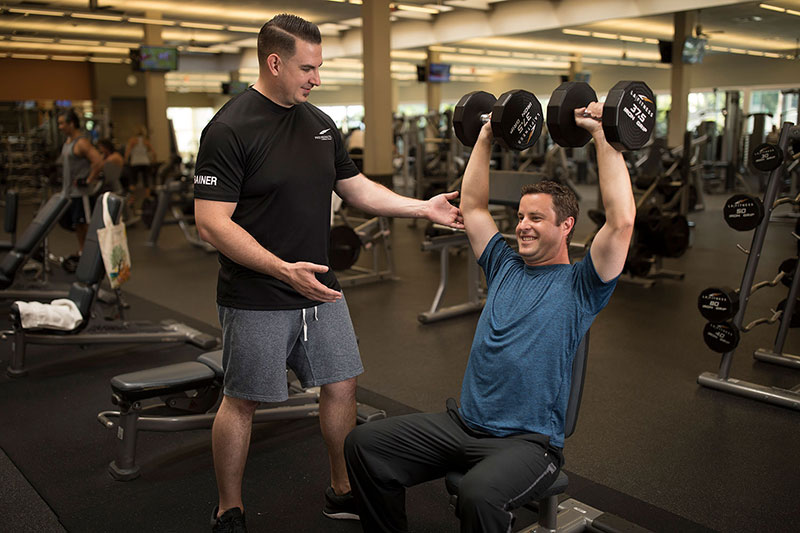
Resources:
Psychology Today “The Science of Why New Year’s Resolutions Don’t Work” https://www.psychologytoday.com/blog/brain-wise/201612/the-science-why-new-years-resolutions-dont-work
American Psychological Association “Making Your New Year’s Resolution Stick” http://www.apa.org/helpcenter/resolution.aspx
We're "Trimming the Fat and Keeping the Muscle" on today's episode of the Living Healthy Podcast! On this episode of the Living Healthy Podcast, just in time for Thanksgiving, we learn about trimming or "cutting" the fat after you finish the bulking phase. This is...
It's easier to work hard when you’ve got a game plan. Here are some options to help keep you moving until the last second of your workout!
On today’s episode, you’ll hear from one of our own Master Trainers about what you should be eating and how you should be exercising during your bulking phase.



Pat B. of Oshawa, Ontario is a 53-year-old mother of two (now adult) children. For most of Pat’s life, she was a self-described “thin person who enjoyed life.” However, over the years she began experiencing some personal family issues, which set her down a path of unhealthy eating. Pat began gaining weight at an unhealthy rate, for the first time in her life. After the loss of her mother, Pat became deeply depressed and again turned to food for comfort. Pat shared that she had gained so much weight that she no longer recognized herself. She felt both depressed and unattractive, and “hated the person [she] had become”. Pat went from weighing a healthy 135 lbs. to 220 lbs., almost double her normal weight. She knew that in order to lose weight and become healthy again, something had to change.
What Pat was sure of is that she wanted to lose weight the healthy way. She didn’t want to go on any fad diets, chug shakes, take pills, or take any shortcuts. Instead, she wanted to learn how to eat healthy and be able to maintain a healthy lifestyle for the rest of her life. This is when Pat turned to the LA Fitness in Oshawa, Ontario. The staff at Oshawa, which Pat described as “very friendly and helpful”, gave her a tour of the club while answering all of her questions. Afterward, she met with the club’s Personal Training Director who asked her about her personal fitness goals and what Pat ultimately wanted to achieve. Pat was given diet suggestions on how to eat healthier, and it was suggested to her that having a personal trainer might be the best option for what she wanted to accomplish. Pat described her decision to start working out with a personal trainer as “the best decision [she’s] made.”
Her personal trainer, Blair D., also asked Pat what her fitness goals were and told her that they were all achievable. All Pat needed was dedication and the determination to get healthy and with that, her journey began. Pat went through her fridge and threw out all unhealthy and prepackaged foods. She then came up with a healthy eating plan that consisted of eating 5 smaller meals a day while also drinking plenty of water. The foods Pat began eating were fresh veggies, lean cuts of meat and whole grain bread. Her new healthy diet, paired with the support of her trainer as well as working out an average of 4 days a week began to show positive effects. Pat’s trainer, Blair D., has encouraged her along the way and pushed her even when she thought she couldn’t do it.
“Set your mind at a goal and make a decision, have the determination and dedication to never give up. You can do it, I did and so can you!”
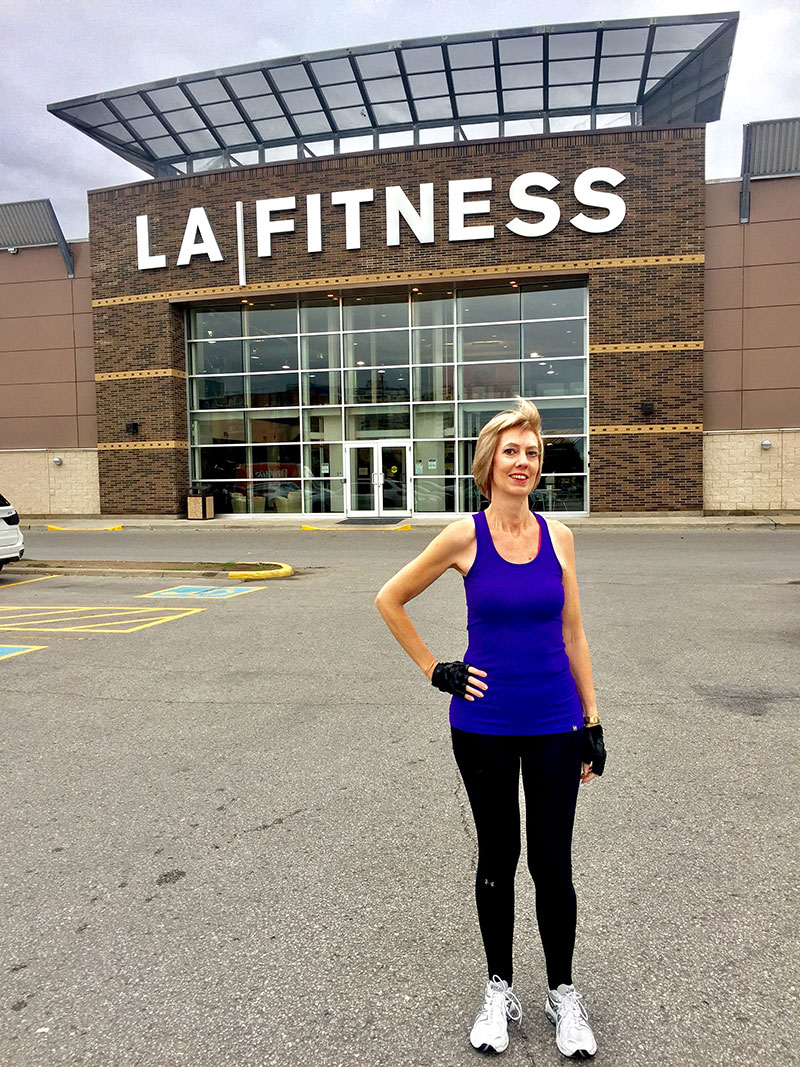
As Pat continued training regularly and eating healthier, her depression began to fade and she started feeling happier. Over the course of 10 months Pat lost 90 pounds and she says her body “looks the best it has ever looked”! It has now been 2 years since Pat first walked through the doors of LA Fitness in Oshawa. Pat continues to maintain her new healthy weight and lifestyle and gives a huge thank you to her club’s Personal Training Director, Dustin S., and her life-changing trainer, Blair D. In Pat’s words, “[she] couldn’t have done it without [them].”
Want more? SUBSCRIBE to receive the latest Living Healthy articles right in your inbox!
LA Fitness member, Nick L., shares how he dropped 102 pounds over the course of the last year! His piece of advice: "consistency is key!"
LA Fitness member, Henry B., shares his skepticism about the gym, how he found a workout routine he enjoyed, and the changes it all made in his life.
Ever struggled with wanting to lose weight but haven’t found the results you’ve been looking for? Personal training might be the best way for you to go.


Tyler I., December 2013
It was a day like any other. Tyler I., of Brookhaven, PA, was getting ready for work, sitting on the couch and tying his boots just like every other morning. However, on this particular day when Tyler stood up to finish getting ready, he found himself out of breath from simply tying his shoes. This was his breaking point. At only 22-years-old, Tyler was 6’1” and weighed 365 lbs., suffered from joint pain and high blood pressure, and was borderline diabetic. When Tyler realized how out of breath he was from tying his shoes, he knew things needed to change. Tyler shared that the change didn’t start a couple days later, or a week later, it started that day. He committed himself to a complete lifestyle change.
Tyler began educating himself on how the body works. He read about macronutrients and how the body processes calories in versus calories out. (Read more about macronutrients here.) He wisely estimated his maximum caloric intake based on his body and began to carefully create a meal plan for himself. While this took care of the nutrition part of things, Tyler now needed to focus on the exercise portion. He joined LA Fitness in March of 2017, and began doing 25 minutes of cardio per day, 7 days a week, with very minimal weight lifting. His initial goal was to get rid of his fat first and then begin building muscle.
“The change didn’t start a couple days later, a week later, it started that day.”
Slowly over time, Tyler increased the time he spent on cardio. His two favorite cardio machines were the elliptical and Stairmaster, which he said really helped him “feel the burn”! Towards the end of an 8-month period, Tyler was spending up to 3 hours per day in the gym and was down 150 lbs.! He now weighed 215 lbs., and he was proud of the change he had made. While he was satisfied with the weight he had lost, Tyler now decided it was time to start building some lean muscle. This was the hardest part for him. Up until now, Tyler had enjoyed watching the numbers on the scale continually drop. However, as Tyler had learned, in order to gain muscle, he needed to increase his calorie consumption! It seemed completely counterintuitive to what Tyler had been doing prior, but he knew it was something he had to overcome in order to obtain the results he desired.
“The human mind is a very, very powerful thing. Once you fully understand the power your brain holds, you will truly realize your potential. When you are truly dedicated to something, you can and will make it happen. You cannot be half in and half out. With full dedication towards your goals, anything is possible. Set a goal, don’t lose focus and keep going until you achieve that goal. You may hit roadblocks along the way, keep pushing through them and come out stronger!”


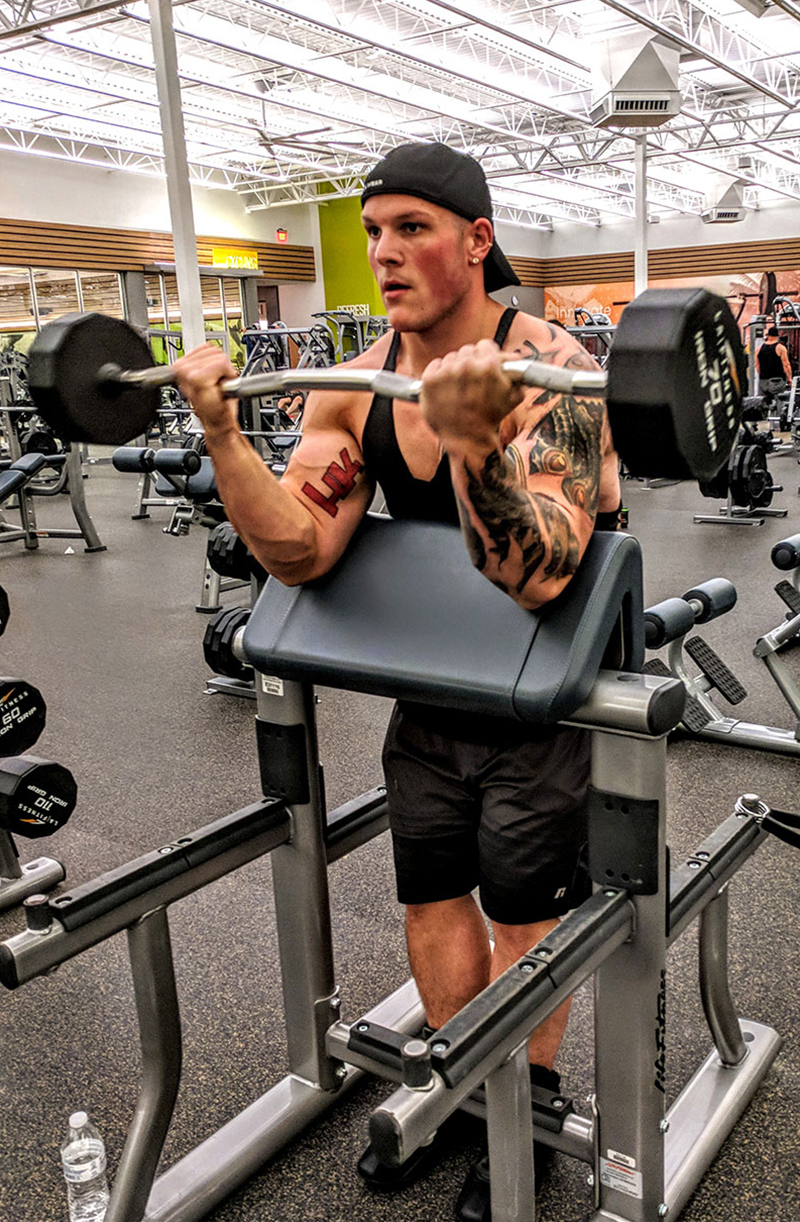

Tyler began getting serious about his weight training, and to this day, continues working out 7 days a week in order to achieve his future goal of competing in a fitness competition – and we believe in him! Tyler never dreamed that at 365 lbs., with a long list of health issues, he’d be where he is today. His relentless drive helped push him to accomplish his goals and build a healthy future for himself. Not only has Tyler turned his life around, but he acts as an inspiration to many who hope to do the same. As Tyler shared, “…with the right mindset, anything is possible!”
LA Fitness member, Nick L., shares how he dropped 102 pounds over the course of the last year! His piece of advice: "consistency is key!"
LA Fitness member, Henry B., shares his skepticism about the gym, how he found a workout routine he enjoyed, and the changes it all made in his life.
Ever struggled with wanting to lose weight but haven’t found the results you’ve been looking for? Personal training might be the best way for you to go.
Be the first to know about exclusive
content, deals and promotions